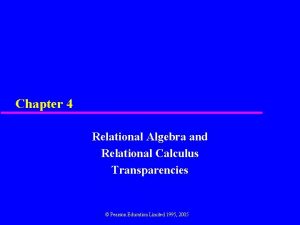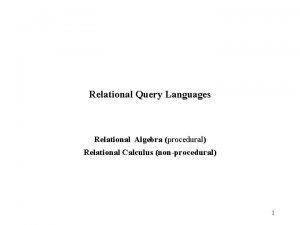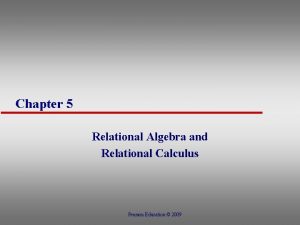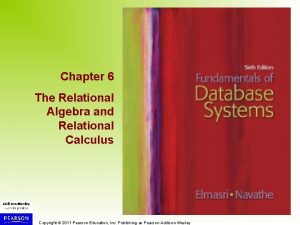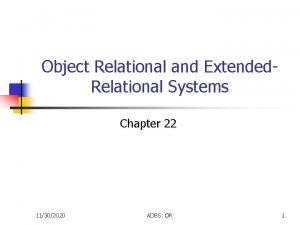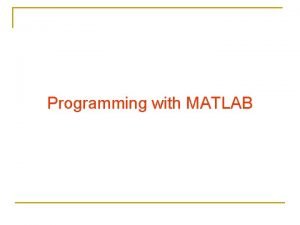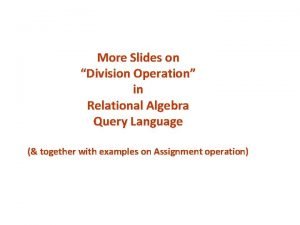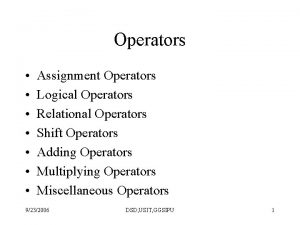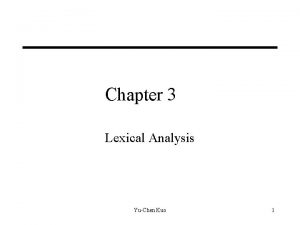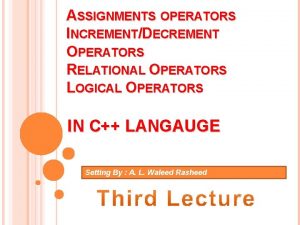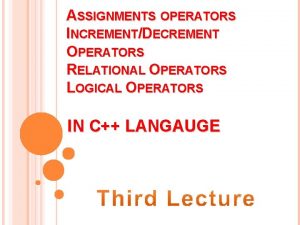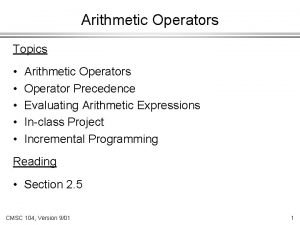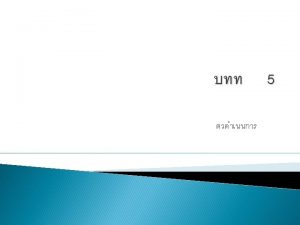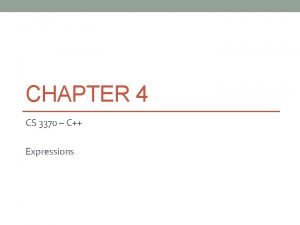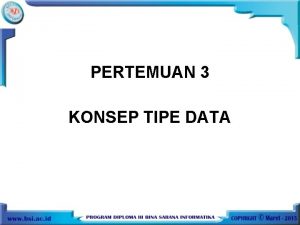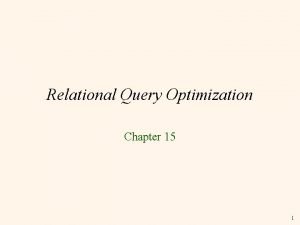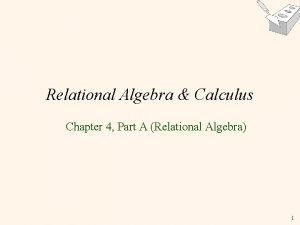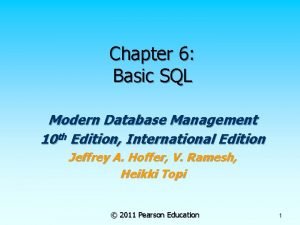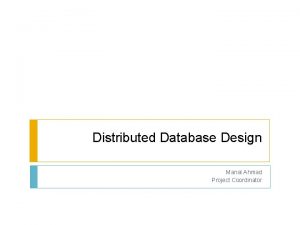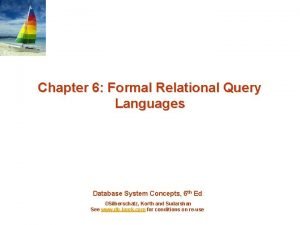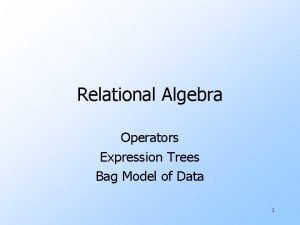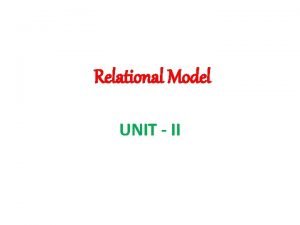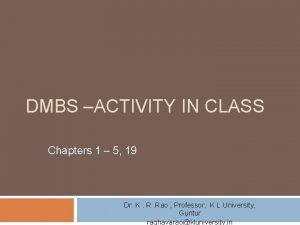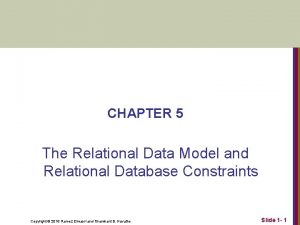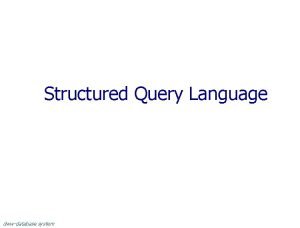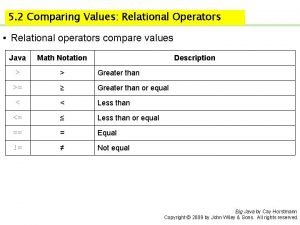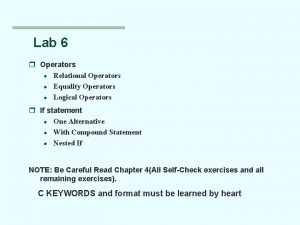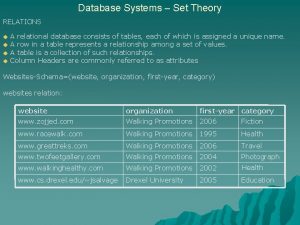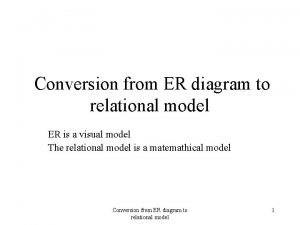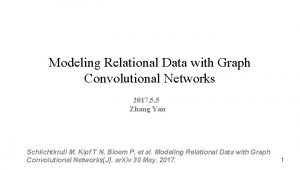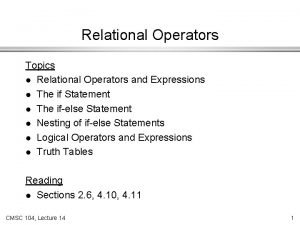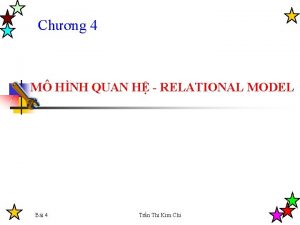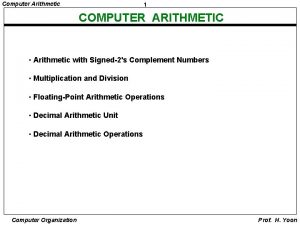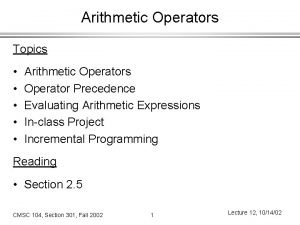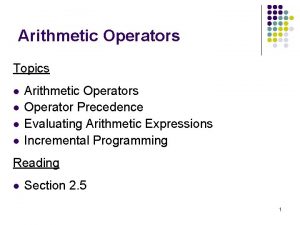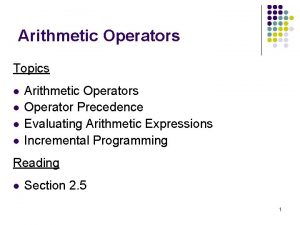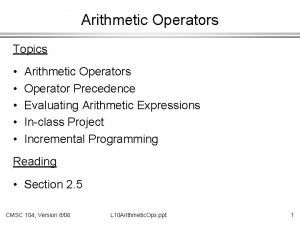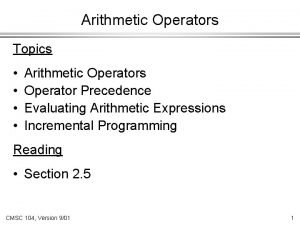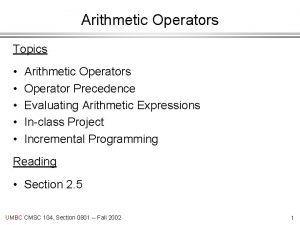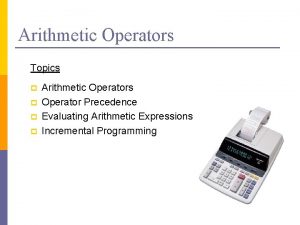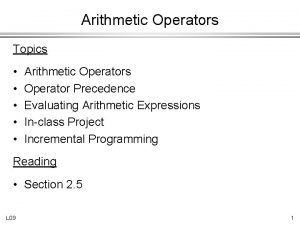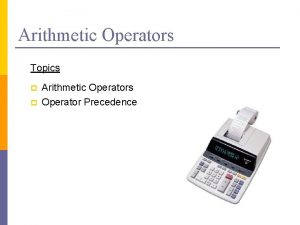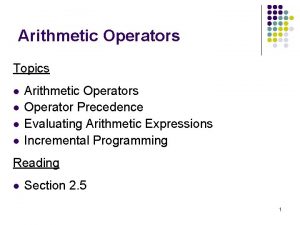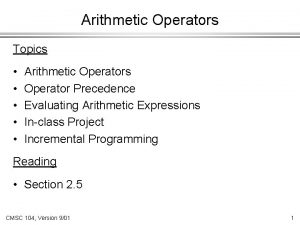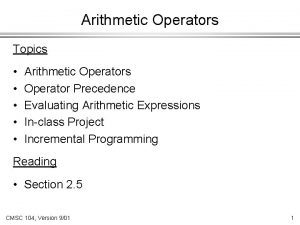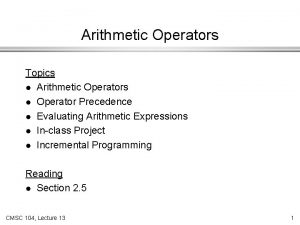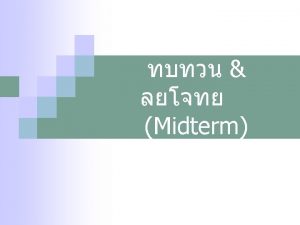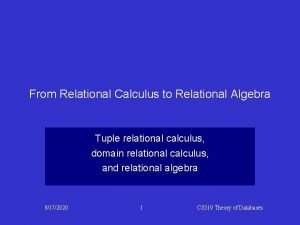2 C arithmetic operator relational operator equality operator




















































- Slides: 52


2 연산자의 종류 C 언어의 연산자 - 산술 - 관계 - 동등 - 논리 - 비트 - 배정 - 조건 - 증가 - 콤마 - 기타 연산자(arithmetic operator) 연산자(relational operator) 연산자(equality operator) 연산자(logical operator) 연산자(bitwise operator) 연산자(assignment operator) 연산자(conditional operator) , 감소 연산자(increment, decrement operator) 연산자(comma operator) 연산자(cast, sizeof, 포인터 조작 연산자: *, &)




















4. 5 비트 단위 연산자 (bit-wise operator) 22 • (예 4. 11) 비트별 논리 연산자와 보수연산자의 예 int x, y; x = 33333; y = -77777; [선언 및 배정] 수식 2진수 표현 결과 x y x&y x^y x|y ~ ( x| y) 00000000100000110101 1111111101101000000101111 00000000100000100101 11111111001000011010 1111111101101001000111111 0000000010010110111000000 33333 -77777 32805 -110054 -77249 77248 - 정수형 int의 크기가 32비트라 가정한다. [해 설]





















43 4. 13 예 제 1 2 3 4 5 6 7 8 /* File : ex 4 -1. c 정수 710을 우로 4비트 이동 */ #include <stdio. h> int main(void) { int a = 710, b = 4; printf(“%dn”, a >> b); } 예제 4. 1 output 44





48 1 2 3 4 5 6 7 8 9 10 11 12 /* File : ex 4 -6. c 18, 35, 21, 96 중에서 최대값을 조건 연산자 이용해 구하는 프로그램 */ #include <stdio. h> int main(void) { int a = 18, b = 35, c = 21, d = 96; int max; max = (a > b) ? a : b; max = (max > c) ? max : c; max = (max > d) ? max : d; printf(“%dn”, max); } 예제 4. 6 - 조건 연산자 ? : 을 사용한다. [해 설] 96 output

49 1 2 3 4 5 6 7 8 9 10 11 /* File : ex 4 -7. c && 와 || 와 ! 의 사용 #include <stdio. h> int main(void) { int i = 0, j = 0, x, x = i && j; ; printf(“%d %d %dn”, y = !(i || j || x); printf(“%d %d %dn”, } 예 */ 예제 4. 7 y; i, j, x); i, j, y); output 0 0 0 1



 Relational algebra and calculus
Relational algebra and calculus Procedural query language
Procedural query language Relational calculus
Relational calculus Relational calculus symbols
Relational calculus symbols Object relational and extended relational databases
Object relational and extended relational databases Substantive equality vs formal equality
Substantive equality vs formal equality Cedaw article
Cedaw article Equivalence vs equality
Equivalence vs equality Relational operator matlab
Relational operator matlab Division operation in relational algebra
Division operation in relational algebra Assignment operator in relational algebra
Assignment operator in relational algebra Regular definition for unsigned numbers
Regular definition for unsigned numbers Assignment operator in relational algebra
Assignment operator in relational algebra Automata
Automata Assignment operator in relational algebra
Assignment operator in relational algebra Arithmetic operator precedence
Arithmetic operator precedence Name of addition
Name of addition Prioritas operator
Prioritas operator Unary and binary operations
Unary and binary operations Tipe data int mempunyai ukuran
Tipe data int mempunyai ukuran Pada tipe data boolean, berlaku operator-operator...
Pada tipe data boolean, berlaku operator-operator... Relational algebra
Relational algebra Advantages of relational database model
Advantages of relational database model Relational calculus
Relational calculus The benefits of a standardized relational language include:
The benefits of a standardized relational language include: Vertical fragmentation in distributed database
Vertical fragmentation in distributed database Formal query language in dbms
Formal query language in dbms Relational mindset
Relational mindset Expression tree relational algebra
Expression tree relational algebra Relational constraints in dbms
Relational constraints in dbms Relational algebra
Relational algebra Relational algebra exercises with solutions
Relational algebra exercises with solutions Relational database state
Relational database state Texas. heres why.
Texas. heres why. Relational operators java
Relational operators java Which scientifically investigable question is relational?
Which scientifically investigable question is relational? Relational dimension of communication
Relational dimension of communication What is a relational databse
What is a relational databse Relational frame theory
Relational frame theory Six stage model of relationships
Six stage model of relationships Flat file vs relational database pros and cons
Flat file vs relational database pros and cons Relational operators in r
Relational operators in r Set theory in dbms
Set theory in dbms Relational algebra subtraction
Relational algebra subtraction Extended relational data model
Extended relational data model Traditional set operation
Traditional set operation Er diagram to relational model conversion
Er diagram to relational model conversion Bourriaud relational aesthetics
Bourriaud relational aesthetics Lean construction
Lean construction Modeling relational data with graph convolutional networks
Modeling relational data with graph convolutional networks Relational expression
Relational expression Elementary algebra tutorial
Elementary algebra tutorial Model
Model
